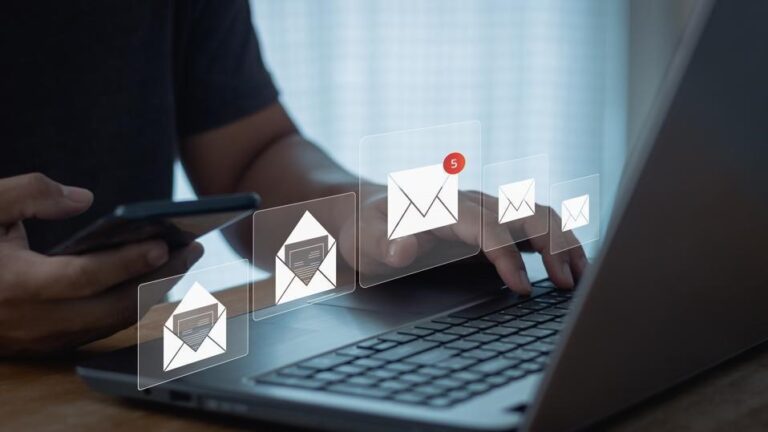Segmentation and personalization
Tailoring your email content to the specific interests and needs of different audience segments can significantly increase engagement. By analyzing your subscriber data, you can create personalized messages that resonate better with each segment, increasing open and click-through rates.
Example 1: A fashion retailer can send different emails to different subscribers based on their past purchasing history, such as formal attire suggestions for those who bought suits and casual style tips for those who bought jeans.
Example 2: Travel agencies can send personalized destination recommendations based on subscribers’ past bookings and browsing behavior on their websites.
Automated Email Campaigns
Automation helps you communicate with your audience in a timely and relevant way. From welcome emails to re-engagement campaigns, automated sequences help you maintain consistent communication with your subscribers and nurture lead and customer relationships without any manual effort.
Example 1: A welcome email series for new subscribers introduces your brand and offers a special introductory offer.
Example 2: Birthday emails to deliver special discounts and gifts to customers on their birthdays.
Mobile Optimization
As smartphone usage increases, it's important to ensure your emails are mobile-friendly. Mobile-optimized emails should feature responsive design, clear calls to action, and easy-to-read content to provide a seamless experience for users on the go.
Example 1: Responsive design promotional emails that adjust the menu layout based on the device screen size.
Example 2: Newsletters with large, easily clickable buttons for mobile users.
A/B Testing
This strategy involves sending two different emails to different segments of your audience to see which one performs better. By testing elements like subject lines, email layouts, and CTA buttons, you can continually refine your approach and get better results.
Example 1: Test two different subject lines to see which one gets more opens.
Example 2: Compare the performance of two different email layouts in terms of click-through rate.
Interactive Email
Incorporating interactive elements like polls, surveys, clickable content, etc. can help increase user engagement. Interactive emails keep subscribers interested and are more likely to interact with your content and brand.
Example 1: If you're an online store, you can include a quiz in your emails to help subscribers discover their style.
Example 2: Real estate companies can send emails with interactive maps to help users search for available properties in different areas.
Drip Campaign
Drip campaigns send an automated series of emails based on a specific timeline or user action. These campaigns provide relevant information over time and keep your audience engaged, making them perfect for educating new subscribers, nurturing leads, and encouraging repeat purchases.
Example 1: A series of educational emails will be sent after you register for the webinar, providing you with relevant information and resources.
Example 2: Post-purchase emails that instruct customers on how to use the product they purchased.
Value-Driven Content
Beyond promotional materials, provide content that adds value to your subscribers' lives: educational articles, industry insights, helpful tips about your products or services, etc. Providing value builds trust and positions your brand as an authority in your field.
Example 1: A food blog allows you to share weekly recipes and cooking tips.
Example 2: Financial services companies can provide insights on market trends and investment tips on a weekly, bi-weekly, or monthly basis.
User-Generated Content and Testimonials
Featuring customer-generated content, such as reviews and testimonials, can really lend credibility to your brand. Incorporating this content into your emails not only captures your audience's attention, but also provides social proof and encourages them to try your product or service. Be sure to only share authentic content.
Example 1: Beauty brands can feature before and after photos of their customers in their product promotional emails.
Example 2: E-commerce platforms can include customer reviews and ratings of products in their promotional emails.
Re-engagement campaigns
These campaigns are aimed at inactive subscribers and aim to re-engage them. This could involve sending them special offers, new product updates, or simply asking for their feedback on why they left. Their responses can provide valuable insights that can help you improve in the future.
Example 1: Emails to inactive subscribers offering them special discounts and encouraging them to make a purchase.
Example 2: A survey email to ask disengaged subscribers for feedback on what type of content they would like to receive.
Social Media Integration
Integrate and strengthen your email marketing with your social media efforts. Encourage your email subscribers to follow you on your social media channels, and vice versa, creating a consistent brand experience. This strategy will help you expand your reach and strengthen your online presence.
Example 1: An email campaign encouraging subscribers to participate in a social media contest hosted by the brand.
Example 2: Include snippets of your social media feeds in your emails to show recent posts and popular products


